TABLE OF CONTENTS
What types of food delivery are there?
Food delivery providers categorize as either restaurant-to-consumer delivery or platform-to-consumer delivery operations.
The restaurant-to-consumer delivery segment includes delivery carried out directly by restaurants. Customers may order their meals by phone or through the restaurant’s website or app. They can also place their order through a third-party delivery platform like Just Eat Takeaway.com or Delivery Hero, whose business models focus mainly on restaurants doing their own deliveries.
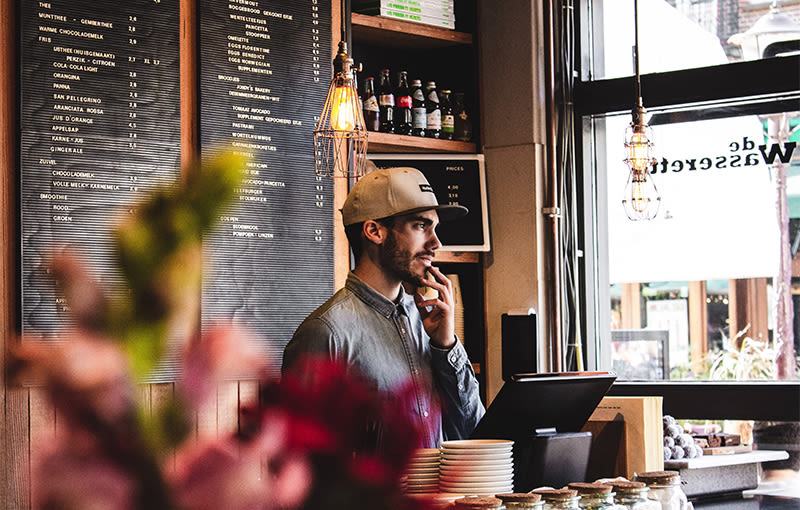
On the other hand, the platform-to-consumer delivery model covers delivery handled by third-party delivery services, also called food delivery aggregators. These companies act as middlemen between restaurants and customers. They offer an online marketplace with various restaurants consumers can choose from and order from. While the restaurant prepares the orders, the delivery aggregator takes care of the entire delivery process.
Third-party food delivery platforms have become more popular in recent years, driven by the rise in online ordering and the global pandemic. Restaurants across the globe are signing up with these services because they offer significant benefits to partner restaurants.
Should your restaurant offer delivery?
The benefits of offering food delivery
Increased reach and visibility
Delivery can help you reach more potential customers outside of your regular clientele. By expanding your restaurant online, you’ll be able to grow your brand awareness, reaching new audiences and demographics that may not have interacted with your brick-and-mortar restaurant before.
Third-party delivery aggregators like Uber Eats, Deliveroo, or DoorDash can amplify this reach even further without little effort on your part. These platforms are used by billions of regular users worldwide. Your restaurant can take advantage of that widespread reach to boost visibility without investing in costly online marketing ads.
Signing up with multiple delivery services will improve the odds of reaching as many potential customers in as many different markets as possible.
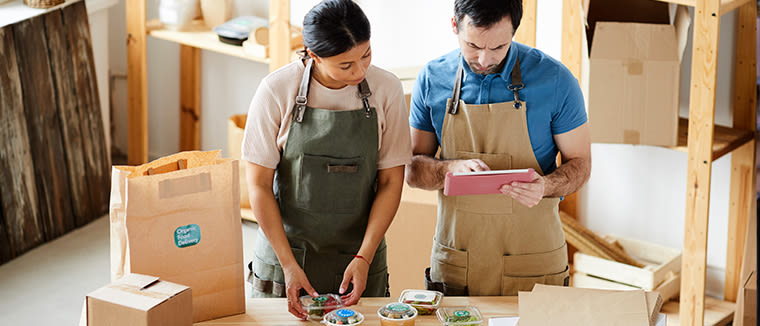
More business opportunities
By offering delivery, you’ll be able to serve a broader range of customers, selling meals even if you don’t have any tables available in-house. Your online restaurant is not limited by its sitting capacity – the sky’s the limit!
Additionally, delivery allows you to turn off-peak hours into profitable hours, helping you drive more profits and be cost-effective.
Finally, creating virtual brands is one of the most significant business opportunities for online food delivery. Many delivery restaurants segment their brand into multiple virtual brands online to expand their reach. Creating new virtual brands is a low-risk, low-cost way to experiment and optimize your menu.
Increased profits
Many restaurants get started with delivery because it is an additional revenue stream. But delivery doesn’t just help restaurateurs drive more sales; it also helps them boost profitability.
Running an efficient delivery operation typically doesn’t require renting a new location or hiring more staff. Instead, you can simply use your existing employees and equipment, especially if you partner with a third-party service to fulfill orders. And if delivery ever becomes the bulk of your business, you could even downsize your physical location.
In other words, delivery doesn’t increase your overhead or labor costs but brings you additional returns. Meanwhile, customers are willing to pay a premium for the convenience of restaurant-quality food delivered straight to their doorstep.
The steps to follow
How to get started with delivery
Setting up new online sales channels and finding your footing in the delivery marketplace can be overwhelming. Luckily, we’ve got you covered with our step-by-step guide!
How do food delivery services work?
Let’s look at how food delivery providers typically operate and how they can be helpful for restaurants willing to enter the delivery space.
Third-party delivery services like Uber Eats, Deliveroo, DoorDash, Bolt, Wolt, SkipTheDishes, and many more partners with as many restaurants as possible to create an extensive restaurant marketplace for customers.
How does the ordering process work?
Customers browse the delivery services’ platforms online or through an app to compare restaurants and place an order.
Once the order is finalized and paid, the delivery provider passes the order to the restaurant.
The restaurant prepares the meal and marks the order as ready.
Finally, a courier sent by the delivery platform picks up the order and delivers it to the customer.
Alternatively, sometimes customers can collect their orders themselves at the restaurant.
Like Just Eat Takeaway.com, some delivery players also sign up restaurants that carry out their own deliveries. With this hybrid business model, these providers want to ensure consumers can choose from the widest variety of restaurants possible.
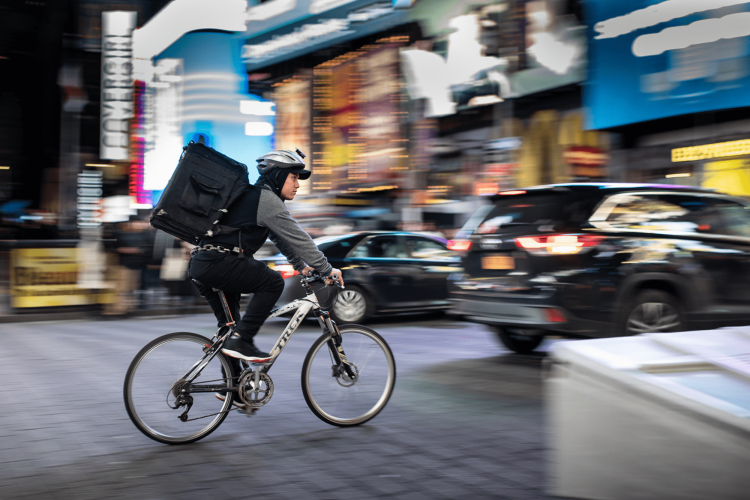
Benefits for restaurants
Widespread reach
Working with a third party for delivery helps restaurants reach more potential customers. That’s because each delivery platform has a significant audience of loyal users ordering through their app or website, therefore serving as a marketing tool. Additionally, as mentioned before, signing up with multiple delivery services will expand your reach even further.
Sharing resources
Restaurants can outsource the entire food delivery operation and benefit from their partners’ resources, which include:
a reliable online ordering platform and app;
a secure online payment process;
a delivery fleet and courier network;
a reliable delivery tracking system;
dedicated customer support;
a range of packaging materials;
a tablet with the delivery service’s software.
Better focus
With third-party services taking care of the delivery operation, restaurateurs don’t need to hire and train delivery drivers, implement an online ordering solution with secure payment options and a tracking system, and set up customer service.
Teaming up with a delivery partner allows restaurants to focus on preparing tasty food and delivering an exceptional customer experience.
Possible drawbacks
Commission fees
Delivery services take a commission on every order made through their platform. Typically, commission percentages sit between 15 and 30%, based on the delivery company you are working with and your business’s location, number of restaurants, and average monthly online orders.
These fees can be hard to absorb, given that the average restaurant only has a profit margin of around 6%.

Less control
Restaurants have little to no control over the delivery process once the meal leaves their kitchen. When and how the food arrives at the customer’s is entirely up to the delivery courier, so there is no way for restaurants to ensure the quality of service. This dependence on third-party delivery drivers – focused on making as many deliveries as possible in as little time as possible – ultimately puts the restaurant’s reputation on the line.
Less contact with customers
With consumers ordering through third-party platforms, restaurants have no direct line of communication with them, making it hard to promote customer loyalty and get feedback.
Additionally, restaurants don’t get access to the customer data acquired by their delivery partners, making it even harder to connect with off-premises customers and send them personalized offers and communications.
For more details, head to our article outlining the pros and cons of working with third-party delivery service providers.
If you want to sign up with a specific delivery service, you might want to read our 101 guides about Uber Eats, DoorDash, Deliveroo, SkipTheDishes, Just Eat Takeaway or Glovo.
What are the biggest hurdles of restaurant delivery?
Offering delivery can open up new revenue streams, boost your restaurant’s visibility and maximize your kitchen’s capacity. But entering the online delivery marketplace comes with a few key challenges.
How to create a top customer food delivery experience
If you want to go far in food delivery, it is essential to recreate your restaurant’s atmosphere and quality food for off-premises orders. Therefore, delivering an exceptional customer experience should be a top priority because it can help you drive sales and customer loyalty.
Below, you’ll find some ideas to elevate the experience for off-premises diners.
To go far in food delivery, it is essential to recreate your restaurant’s atmosphere and quality food for off-premises orders. Therefore, delivering an exceptional customer experience should be a top priority because it can help you drive sales and customer loyalty.
Below, you’ll find some ideas to elevate the experience for off-premises diners.
Get your menu right
As mentioned earlier in this guide, your delivery menu is one of the major cornerstones of your operation. That’s why getting it right is the first step to long-term success. It’s usually a good idea to slim down your delivery menu and only include dishes that look and taste as good at home as in your restaurant.
Create a fun unboxing experience
There’s nothing people love more than unwrapping gifts. They should feel that same excitement and anticipation whenever they unbox or unwrap their delivery meal. Here are some things you could do to create a memorable unboxing experience:
Use branded takeout boxes and bags that tell your brand’s story.
Use unique packaging material or turn it into a game or puzzle.
Appealingly present your product (don’t just chuck your dish in a box).
Add a personal touch by adding whimsical instructions, such as how to plate the dish as your chefs would. A handwritten thank you note or branded freebies like stickers and cards.
Deliver your food on time
Speed of delivery is one of the most critical factors of the entire food delivery experience. Six of ten off-premises customers mention it as their number one priority. Therefore, your restaurant’s top priority should be ramping up delivery times.
You can look into restaurant management solutions that automate your online ordering flow to get your orders out of the door as fast and efficiently as possible.
Go the extra mile
The best delivery brands constantly reevaluate how they present and deliver food and find new ideas to elevate the off-premises experience. For example, you could create custom playlists that customers can put on at home or include decorations in your delivery bag to put up around the room.
Ask feedback
Customer feedback is essential for long-term growth. Encourage diners at home to leave a review by including a postcard with a QR code for a survey link in each delivery order. This will show guests that their opinion matters and help you perfect your offering and operation.
Technology platforms you need to succeed
Point-of-sale system (POS)
The POS is the heart of the restaurant’s tech stack, as it needs to talk to all the other business systems you are using. So you must select the right POS with features that will support your growing (delivery) operation.
How to choose the right POS system

Delivery platforms
Third-party delivery services provide restaurants with a sales platform and take the burden of delivery off your hands. If you plan on working with multiple providers, it’s vital that you select delivery partners that can integrate with your POS and other systems.
Check which channels offer integration
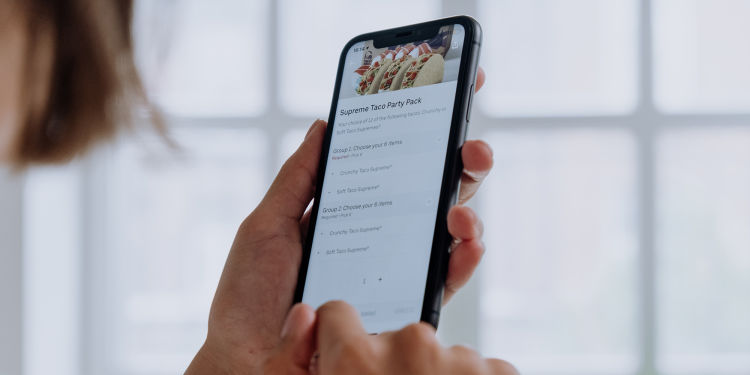
Online ordering store
You could also choose to run your own food delivery service, so your restaurant is less reliant on third-party providers. For example, if you have an online ordering system, you control the entire delivery experience from a to z.
Creating a seamless online ordering store
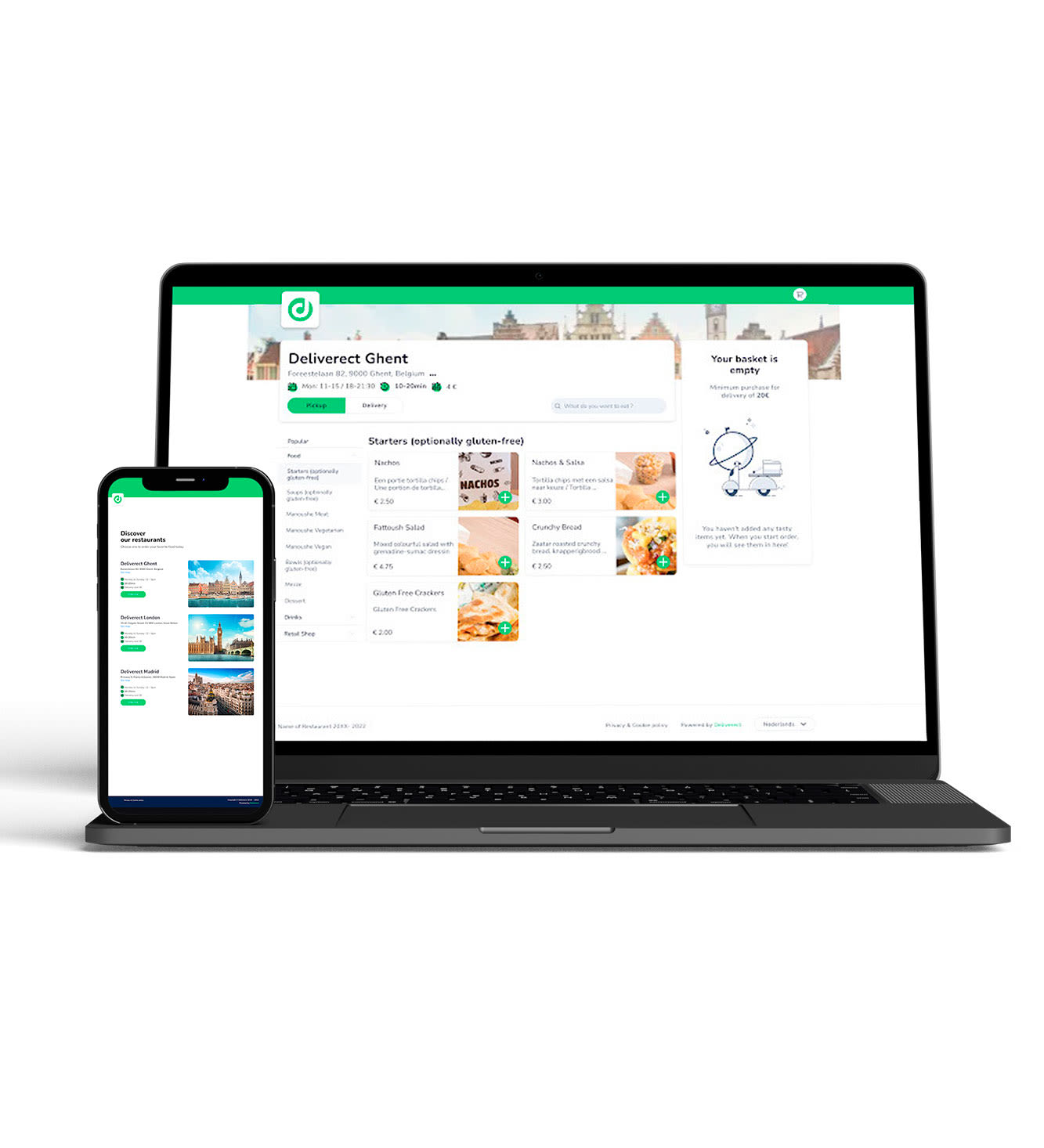
Omni-channel restaurant management platform
All-in-one restaurant platform solutions can help you get the most out of your delivery operation. These platforms integrate your online orders into your POS, enable you to manage menus across platforms and locations, and give you the reporting tools you need to gain business insights.

Our guide to food delivery for restaurants should have taught you everything you need to know about food delivery. You’ve learned about the benefits of offering delivery, the steps you need to take to get started, the pros and cons of using third-party delivery providers, and the hurdles that may come with restaurant delivery.
At Deliverect, we’ve helped thousands of restaurants maximize their opportunities by opening up new online sales channels and optimizing their off-premises order management. We built our platform to avoid the common issues that delivery restaurants run into and help you save time, labor, and money while increasing your business insights and revenue.
We work together with restaurateurs like you and constantly improve based on their feedback. So if you want to know how Deliverect can help your business make the most of off-premises orders, schedule a demo, and one of our experts will give you all the details.

Get started today
Get in touch for a free demo with one of our Deliverect experts, or create an account and see how you could start streamlining your online orders.
RELATED ARTICLES
There's more for you to read!
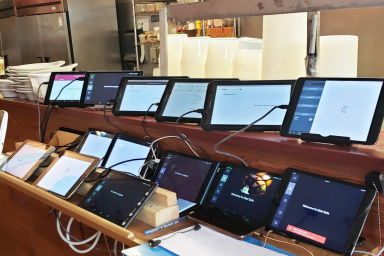
Online food delivery, Restaurant management, Trending
How to Solve 8 Challenges Delivery Restaurants Face (2023)
In this article, we’ll discuss some key challenges of digital ordering and online food delivery for restaurants and how to address them.

Online food delivery, Trending
How can restaurant brands deal with menu price inflation?
How to handle inflation in your restaurant? Should you raise prices or take a customer-focused approach to manage the increasing costs? Here are five tactics to navigate menu price inflation wisely.
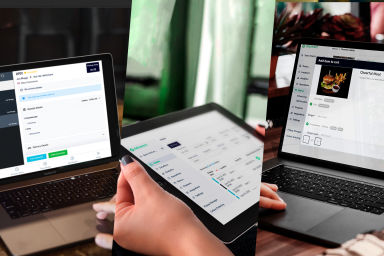
Omni-channel restaurant
Technology Platforms Every Food Service Operator Needs to Succeed With Delivery
To succeed as a food service operator, a technology platform supporting delivery options is crucial. This article covers essential technology platforms to grow your business and stay ahead of competitors.

